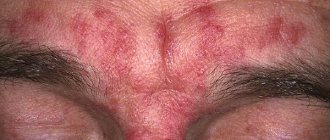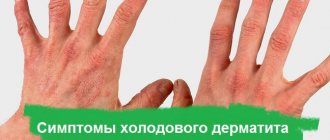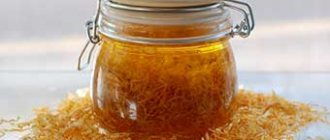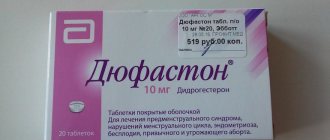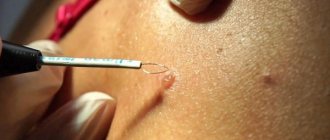Allergy in the hands to cold is a rather rare and not fully studied phenomenon, the exact causes of which have not yet been clarified. Doctors only know that the cause of this disease is the human body’s hypersensitivity to cryoglobulin (its own protein), which begins to change when exposed to low temperatures. This process causes the so-called cold urticaria.
This disease is especially active in winter, when the air temperature drops below zero. However, sometimes an allergy in the hands to the cold worries patients even in the summer season (with sudden hypothermia, after swimming in cool water, etc.).
Causes of pathology
Doctors are confident that hand allergies to cold are not an independent pathology. This is only one of the symptoms of any physical disease. The reaction in the form of urticaria is manifested by an organism weakened by a latent and long-term course of the disease.
As mentioned above, the culprit that causes hand skin allergies to cold is a special protein (cryoglobulin), and the trigger is low temperature. The progress of the entire process is determined by various predisposing factors in the form of decreased immunity, as well as the presence of parasitic, colds and infectious diseases.
Another reason that a person is allergic to cold hands is problems with the digestive system in the form of cholecystitis, chronic gastritis or ulcers. But experts are confident that in addition to these, many other chronic ailments can cause the body to react to a decrease in ambient temperature.
As for children, their cold allergy most often becomes a continuation of food allergies.
Causes of cold type allergies
In people who are sensitive to temperature changes and suffer from cold allergies, frosty air causes an effect on mast cells.
These cells are located on the surface of the skin. They give a signal, and a reaction occurs, accompanied by the release of histamine. The body, experiencing an excess of the above-mentioned hormone, responds with an allergic reaction.
People who are sensitive to weather changes should think about what the body’s reaction to a drop in ambient temperature is and what treatment is required.
There is a high probability that a disease is hidden in some part of the body, the development of which a person may not be aware of.
Eliminating the symptoms of a cold reaction is not enough. It is recommended to get rid of the root cause of the disease.
The main causes of cold-type allergies that can lead to complications are the following factors:
- chronic pathologies that a person has suffered from for a long time: sinusitis, sinusitis, caries or tonsillitis;
- disruptions in the functioning of the endocrine system;
- weakening of the immune system is often provoked by the presence of helminths in the human body;
- kidney pathologies, diseases of the gastrointestinal tract, liver and other organs;
- colds, stress and cancer;
- hereditary predisposition;
- infectious diseases, which include: chickenpox, mumps and pneumonia;
- existing problems with an allergic reaction to external irritants: dust, animal hair or pollen;
- long-term use of medications belonging to the category of antibiotics.
Article on the topic: Allergic conjunctivitis: treatment in adults and children
Rarely, there are precedents in which the above-mentioned type of allergic cold reaction is genetically predisposed. Intolerance to the cold form of allergy sometimes manifests itself in children if one of the parents had similar problems.
The most common type of cold allergy does not occur from cold, but is provoked by windy weather. Its main symptom is not itching, but burning of the skin.
Based on the above factors, it becomes clear that many people are at risk. Therefore, the possibility of acquiring a cold type of allergy cannot be ruled out. Such symptoms require treatment.
Predisposing factors for allergies are sometimes trivial changes in temperature conditions. For example, a person moves from one room to another or goes outside.
The release of histamine can be triggered by contact with supercooled water. This situation can occur when leaving the pool or while swimming in open water. Some people have trouble washing dirty dishes every day.
Causes of urticaria
Allergy to cold on the hands (see photo below) has a rather complex mechanism of appearance and development, which modern medicine is not yet able to fully understand.
However, there are certain factors that provoke the manifestation of its symptoms. They are:
- contact with cold water that occurs in everyday life while washing dishes or when cleaning, as well as when swimming in natural bodies of water; - a sudden transition of a person from an environment with normal temperature conditions to a windy environment with low air temperature; - Drinking food or drinks that are too cold.
All these factors work only if the human body has a weakened immune system.
general description
A hypersensitive reaction of the body that occurs in response to exposure to low temperatures is called cold allergy.
The main symptoms of an allergy to cold are hyperemia of exposed parts of the skin, peeling, itching, cracks, and the appearance of various rashes and erosions. Treatment of cold allergies includes warming the affected parts of the body, taking antiallergic medications, and topical use of various wound-healing and anti-inflammatory creams and ointments. For preventive purposes, special protective cosmetics should be applied to the skin in cold weather.
Symptoms of pathology
Allergies in the hands to cold are often disguised as dermatitis. That is why it can be very difficult to distinguish it from this disease. An allergy to cold on the hands (see photo below) begins with simple scratching of the skin. Then your hands become dry. The skin on them becomes rough and covered with small cracks. Next, rashes like urticaria appear. After this, the hands swell.
In addition to hives, with its dense pinkish-red rashes, blisters may also appear on the skin. Their formation is accompanied by an unpleasant sensation of burning and itching. Most often, cold allergies on the hands resemble nettle burns, which, in fact, is why it got its second name.
The body may also exhibit more intense reactions. This occurs when cold rain or snow hits the surface of the skin. In this case, the hands become covered with red, swollen blisters filled with clear liquid. All these symptoms become pronounced immediately after warming the cooled areas of the skin. Then they gradually disappear, and after 30-60 minutes the skin becomes clear. In some cases, the rash lasts for a week, and sometimes longer.
Also, a person predisposed to allergies to cold begins to sneeze after going out into the cold. At the same time, he develops a runny nose. Such symptoms are associated with damage to the mucous membrane. All this causes difficulty in breathing.
The body's reaction to low temperatures sometimes manifests itself as an allergy to cold on the hands and eyes. At the same time, the organs of vision turn red, starting to tear and itch. At the same time, swelling of the area around the eyes and eyelids appears. It often becomes painful for a person to watch. He experiences pain in the eyes and other uncomfortable sensations, which intensify in bright daylight.
Cold allergies in the hands are also determined by some additional signs. These include:
- shortness of breath;
- headache;
- general malaise;
- pressure drops.
Such manifestations bring great discomfort to a person and contribute to the appearance of irritability, and also reduce performance.
Prevention measures
To prevent cold allergies from affecting your hands under the influence of development factors, you must adhere to the following preventive measures:
- During the cold season, special attention should be paid to nutrition and hydration of the skin. For these purposes, it is better to use pharmaceutical cosmetics that are approved by dermatologists and have a gentle composition. You should not go outside immediately after applying hand cream. At least a quarter of an hour should pass.
- Do not walk in frost, rain or snow with unprotected hands. You need to love such an accessory as gloves and mittens.
- Avoid hypothermia. But if you need to be outside for quite a long time, then you need to have a thermos with hot tea with you or go to a coffee shop for a while to drink a hot drink.
- Review your eating habits. If there is no accompanying allergy, then enrich your diet with nuts, fatty fish, and vegetable oils.
- In the summer, begin to harden the body, gradually reducing the water temperature.
Hands come into contact with various irritants more often than other organs, so it is necessary to especially carefully protect them from contact with possible allergens. And if primary symptoms of an allergy appear, you should not delay a visit to an allergist. Timely diagnosis and timely initiation of therapy is the key to a favorable prognosis and improved quality of life even in the cold season.
Types of allergies to low temperature
Cold urticaria can be:
1. Acute or chronic. This form of pathology begins with intense itching of exposed skin, sometimes spreading to the entire body. Further, swelling occurs in the affected areas, manifesting itself in the form of blisters. In acute pathology, individual areas of the skin become covered with intense red rashes, similar to a nettle sting. Severe forms of the disease are accompanied by general malaise, pain in muscles and joints, increased heart rate and severe weakness. Such exacerbations last for several weeks, and sometimes can bother a person throughout the cold period.
2. Recurrent. This form appears only in autumn, winter and early spring. At other times, it worsens when the skin comes into contact with cold water.
3. Reflex. This form of allergy is a local or general reaction of the body to cold. Its manifestations are a rash that occurs in the area of direct contact with low temperatures.
4. Family. This is a rare form of allergy that is passed down through the family. This pathology is characterized by a maculopapular rash, accompanied by a burning sensation. This reaction occurs 0.5-3 hours after contact with cold. Symptoms of familial urticaria include joint pain and chills, as well as occasional fever.
5. Cold erythema. The manifestation of this type of pathology is accompanied by redness of the skin with pronounced painful sensations in the affected areas.
6. Cold dermatitis. The skin with this form of the disease is very flaky and itchy. As the pathology worsens, swelling is also observed.
Cold urticaria test
All of the above symptoms should not be confused with the body’s natural protection from wind and cold, which do not cause much discomfort to a person and quickly go away in a warm room. But at the same time, it is important for both the patient and the doctor to promptly determine what the nature of the reaction to cold is. To do this, you can undergo a complex examination that uses special equipment. But there are also simple methods that can be used even at home.
So, you can apply a piece of ice to the crook of your elbow for 10-15 minutes. If urticaria appears, this indicates the body’s predisposition to cold allergies. But if you have any doubts, it is still better to consult a doctor. After all, to accurately determine allergies, you will need a blood test.
“Martyrs of the cold. Cold allergies - the scourge of the winter period"
This misfortune comes with the first cold weather. As soon as the mercury dropped below zero, dark times began for a very impressive part of our fellow citizens. Increased sensitivity to low temperatures prevents the unfortunate from enjoying the first snow and other delights of late winter. in other words, cold allergy.
At first glance, its manifestations resemble an ordinary allergic reaction. In a person suffering from a cold allergy, the skin begins to itch, turn red, become covered with spots or a small rash. True, in this case, only those parts of the body that are exposed to cooling are affected: the face, hands, inner thighs, calves, skin around the knees. In addition to purely allergic manifestations, cold allergies can also masquerade as illnesses that are quite common for the cold season: colds, migraines, conjunctivitis. When going out onto a windswept street, for no reason at all the unfortunate people may start to have water from their eyes and nose, their forehead and temples to ache, and they may lose their breath (just like during an attack of bronchial asthma). But as soon as they enter the room, the unpleasant sensations disappear. Until the next foray into the piercing cold.
The reaction to cold is considered pseudo-allergic
Doctors call this reaction pseudoallergic. It differs from ordinary allergies in that the culprit of the problem - the allergen - is absent from the body. According to its principle, a physical factor operates - frost, causing local cooling of tissues and damaging the cell membrane, from which the main allergy provocateur - histamine (and other similar substances) comes out. Under the influence of low temperature, short-lived, unstable immune complexes are formed from antibodies and proteins in the body, which quickly disintegrate in heat. With a true allergy, you can’t easily bring the body back to normal. This circumstance is of little comfort to “false” allergy sufferers. What difference does it make what causes the hated itchy spots on the skin and the nasty slush in the nose, when because of them it is simply impossible to go outside?
Sure salvation - warm equipment
The poor fellows are much more interested in the answer to another question: how to avoid such an obsession? What can you do to prevent a walk through the winter forest or to a nearby store from turning into torture? Warm yourself! Short skirts and bare heads are not for you. The equipment of a person suffering from cold allergies should be impervious to wind and moisture - with a hat for the season, a deep hood, leather gloves, and long boots. Underwear only made of cotton, flannel or flannel: synthetics and wool increase the manifestation of allergies. Before going outside, do not lubricate your face with hydrating (water-containing) cosmetics. Protect your facial skin with special seasonal cosmetics. At the same time, it is absolutely not necessary to splurge on expensive creams. Thrifty American women have for some time now preferred modest Vaseline and vegetable oil (from sunflower to peanut). However, these products have one drawback: they make the skin shine. But this can be easily fixed by lightly powdering your face. By eating ice cream, you can get a cold migraine. For those who suffer from allergic rhinitis, 10-15 minutes before going outside, it’s a good idea to prevent a snotty episode by instilling special anti-allergy drops. But vasoconstrictors are contraindicated for pseudoallergy. They only dry out the nasal mucosa and increase the manifestations of cold allergies. With the help of special antiallergic drops, you can also get rid of sudden tearfulness. Eyes sensitive to cold generally require super-gentle treatment. In cold weather, it is better not to irritate them by wearing contact lenses and excessive makeup (if mascara gets into your eyes, it will only intensify the manifestation of cold conjunctivitis). And drinking cold drinks or ice cream can easily trigger a cold migraine attack. Experts call this type of headache an ice-cream headache, which translated means “headache from ice cream.” If you want to treat yourself to a portion of your favorite popsicle on a cold day, let it melt. Dry heat will prevent your suffering. Are you already sick? Do you have a headache, your hands and face itch, your nose is running, and your eyes are clouded with tears? Get warm! If you get wet, immediately change into dry clothes, drink hot tea and take a tablet of any antihistamine. Wipe itchy areas on the skin with a soda solution (1/3 teaspoon per glass of warm water), lubricate with agave juice or an oil solution of vitamin E. You will see: relief will come in a few minutes. For those who do not yet have a cold allergy, we can recommend herbal medicine - one of the main methods of naturopathic treatment, which has been successfully used for many millennia in all countries of the world. To do this, it is enough to purchase at the pharmacy the herbal collection of the FITODOL series for the prevention of allergies, made by specialists from the Institute of Naturotherapy from herbs collected in the regions of the Altai Mountains, according to the recipes of Altai healers, although before such prevention it is better to consult a doctor.
Before treatment, do an allergy test
And under no circumstances “wear out” your sensitive skin with constant hygiene procedures: soap, especially cheap alkaline-based varieties, only dries out the skin, depriving it of its natural protective lubricant. The same applies to visiting the pool. In the autumn-winter period, citizens suffering from cold allergies will have to give up this pleasure (“water” urticaria is much more severe than “air urticaria”), and also reduce the consumption of chocolate, oranges, fish, eggs, honey - the most common allergy provocateurs. Although, of course, before limiting yourself in anything, make an appointment with a doctor. This is what Marina Gennadievna Ukolova, a doctor at the Independent Laboratory Invitro, told us. “In Vitro there are many blood tests to determine specific immunoglobulins for various types of allergens, and not only. There is also common immunoglobulin E, which allows you to determine in general whether there is an allergy or not (it is a screening indicator). All other specific immunoglobulins already specify the source of the allergy. For example, if you take a blood test to determine immunoglobulins for cat epithelium, you will get the result for this particular allergen! And so you can test for immunoglobulins in many products (we have more than 90 of them), for pollen of various plants (weeds, trees), mold, nuts, animals, cockroaches, ticks. Using diagnostics, it is also possible to recognize pseudo-allergic diseases, such as cold allergies. Since with allergy tests, experts recommend studies of the liver and gallbladder, intestinal flora, tests for viruses, helminths. These pathologies can simulate the clinical picture of true allergies. You can test for cold allergies yourself. To do this, just put a piece of ice on your wrist. After holding it for 20 minutes, observe your reaction. If rashes appear on the skin, itching begins, there can be no two opinions: you have a cold allergy. True, such a test is only suitable for confirming the simplest form of cold allergy. More complex types of allergic reactions to low temperatures can only be tested in laboratory conditions.
Treatment
What should those who have allergies to the skin on their hands do? The symptoms and treatment are well known to specialists. However, the answer that doctors give does not always suit patients. Doctors will recommend completely eliminating exposure to the allergen, that is, frost and cold. And it is almost impossible to do this. But in any case, those who suffer from winter allergies will need to wear warm clothes made from natural fabrics when going outside and try to avoid hypothermia.
You should also take into account the fact that the degree of sensitivity in each person is an individual indicator. Some suffer from an allergic reaction already at minus 8-10 degrees, while others suffer at minus 24-28. There are also people whose skin becomes red when they wash their face with cool water. In addition to precautions, there are many remedies, the use of which will significantly reduce the consequences of pathology.
Popular traditional medicine recipes
Herbal infusions
If a cold allergy strikes you far from medical institutions, you can try to solve the problem yourself. To do this, you need to use the following traditional medicine:
- Treatment with herbal infusions:
- A decoction of elderberry, linden and meadowsweet will help boost your immunity and keep you warm. Take 10 g of crushed dried herbs per liter of boiling water and leave for 10 minutes.
- A decoction of licorice root is also effective in the fight against hives. For 500 ml of boiling water, take a tablespoon of crushed root, simmer over low heat for 30 minutes and leave for another hour.
- A decoction of yarrow, marshmallow and string helps well. The mixture of herbs is added to boiling water and boiled for 20 minutes. You need to drink half a glass a day.
- A collection of burdock, volosh nut leaves and violets is poured with boiling water, and a third of a glass is drunk every day.
- Treatment by applying soda. Lotions made from a baking soda solution effectively relieve itching and redness from frozen areas.
- Treatment with pine lotion. Frostbitten hands and face can be wiped with lotion made from spruce and pine cones. The crushed cones are added to a glass of water and boiled for 30 minutes. Wipe the skin with the cooled broth after each exit to the street.
Use of drugs
If a person is allergic to cold on their hands, the treatment of this disease will be similar to eliminating a true allergy. Among medications, antihistamines such as Claritin, Tavegil and Suprastin are prescribed. It is worth keeping in mind that some medications produce a hypnotic effect, and, therefore, they should not be used before performing work that requires quick reaction or concentration. In severe cases, the doctor may prescribe some immunosuppressants, as well as plasmapheresis to cleanse the blood of glucocorticosteroids and cryoglobulins.
Often, cold allergy is a manifestation of chronic infection with sinusitis or bronchitis, tonsillitis or pyelonephritis. Diseased teeth can also provoke its manifestation. In this case, the doctor should prescribe appropriate medications to eliminate these ailments.
People with impaired intestinal and liver function are predisposed to allergies, including cold allergies. In these cases, treatment of the underlying disease will eliminate the unpleasant symptoms.
It is also worth remembering that those who have allergies to the skin on their hands (symptoms and treatment of pathology are the subject of our attention) should be under constant medical supervision, since the body’s reaction is individual for each patient.
Use of ointments
When diagnosing “cold allergy,” creams sold in pharmacies are sometimes used. However, their use will require prior consultation with a specialist.
How to treat allergies to cold on hands? To eliminate unpleasant symptoms, you should pay attention to antihistamines for external use. These include “Gistan N” ointment for cold allergies on the hands, as well as “Skin Cap”. You should only take into account the fact that these products contain a hormonal substance.
With the help of La-Cri ointment, allergies to cold on the hands (symptoms) can be effectively eliminated. And reviews generally characterize the treatment as effective. However, La-Cri ointment also has some contraindications. It cannot be used by those patients who are allergic to the herbs it contains. Some patients benefit from the manifestations of urticaria with regular baby cream or any fatty cream.
When solving the question “How to cure allergies to cold on your hands?” Don’t forget about auxiliary products that will save your skin from irritation.
Treatment of children
For kids, cold allergies cause great discomfort. The red spots and rashes that appear on their hands after a winter walk are itchy and may even become inflamed. Such a child should be taken out for walks less often in cold weather, and when visiting the street, dress him properly and lubricate his hands with baby cream.
As for antihistamines, they can be given to a child only as prescribed by a doctor. In this case, the baby needs not only to be treated, but also to strengthen his immunity.
